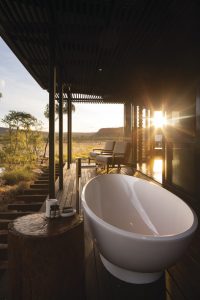A few weeks ago, I spoke with the owner of one a small boutique hotel connected to TXA. It’s in a destination popular with both international and domestic tourists. We discussed the challenges of the last few years and what’s happening right now.
Her business, like yours, has endured COVID lockdowns, the post-COVID ramp, then the ‘cliff’, expensive and cancelled flights, cancelled bookings, few international visitors, high interest rates staff shortages etc etc. We agreed it’s been tough. Some longstanding businesses in her destination, including local activity operators have gone to the wall over the last two years.
Despite all of this, she has had a solid 2023, and has kept the momentum into summer.
The obvious question is… why?
Well, from what I can see, the standout reason is that, in her online marketing, she’s creating compelling ‘images’ in her product descriptions rather than blandly listing ‘features and benefits’. She’s connecting prospects to ‘rich’ experiences, by describing them in an evocative way. It is the skill of telling stories, not just selling rooms or, for activities, selling a ticket.
It means when a traveller goes to her website or finds her products on one of our TXA distributors, they are inspired by the picture she has painted to go ahead and book. It makes sense and is easy enough to do. But it may take a re-think about how you approach writing your product descriptions. Write and curate descriptions and images not like a business owner, accountant or tour manager, but from the customers perspective.
You need to dream and imagine like a traveller, because emotion, excitement and inspiration will ‘sell’ way better than a list of features.
By creating emotional connections, personalising the experience, painting vivid theatre in their minds, sharing real-life stories, with evocative photos, and building anticipation, you can transform a simple product description into a captivating journey. The best descriptions motivate your audience by allowing them to imagine the taste, smell, and feel of your product. That’s what entices them to book it.
Here’s how..
Set the scene with emotion.
Begin with a short compelling introduction that instantly transports your reader to the destination or activity. Create a sense of place, time, and mood. For instance, if you’re describing a luxury outback tour, your story might begin like this:
“As the golden sun dips below the horizon, casting a warm glow over the jagged ranges of Australia’s ancient red centre, you find yourself standing in the heart of a desert paradise. Welcome to the start of Macdonald Ranges Luxury Tours, where time stands still, and the Dreamtime comes alive.”
Then tailor features to personal tastes and expectations.
Again, use stories to match individual interests, preferences and desires of your potential customers. Some may be adventure-seekers, while others are after solitude, relaxation or luxury. Create different narratives for the segments you are targeting.
For example, “enjoy romantic cocktails on your private terrace, watching the sun set over the Indian ocean with Kookaburras providing their unique evening call. And for the adventurous, you can explore the nearby coves and pristine beaches for an unforgettable snorkelling experience.”
Align your product images by ‘colouring a picture’ with words so customers imagine the richness of what you offer. Create sensory detail such as the sounds they will hear, the smells, the tastes of local produce, the feelings they will experience. You’ll know them because you live your product, just identify them and turn them into evocative words.
Where possible add real stories from customers.
Turn testimonials into stories maybe using personal anecdotes or reviews from past guests. Authentic experiences are easily built into your stories and add credibility to your narrative. For example, “An Italian backpacker on our Dawn Patrol kayak adventure couldn’t stop raving about the breathtaking encounter with a pod of dolphins, how close they were and the knowledge of our guides.
Don’t give it all away.
Create stories that build anticipation and a sense of “I want more”. To do this, use hints, cliffhangers or foreshadowing to capture and keep your customers engaged and eager to learn more. Tease aspects of your products or their stay or highlight unique experiences that await them.
For instance, “At dusk you might hear the chirping and see the brilliant blue of Fairy Wrens gathering around the bird bath outside your room” or “Explore the spiritual serenity of the secret Dreamtime cave at sunrise where the sun dances on the ancient granite stones”.
Storytelling is a potent tool in describing accommodation or activities. By creating emotion and personalising the experience, with vivid ‘word’ pictures, re-telling ‘real’ stories, and raising anticipation and excitement, you can convert a bland description of your business and the products you want travellers to book, into an enticing and captivating experience. It will deliver more bookings!
By the way, don’t forget to use really inspiring photos to showcase your business and products. And align the posts, stories and reels you use on social media with what you are conveying in the descriptions you publish on your website and other channels. Because bringing together storytelling and great images guarantees bookings!

